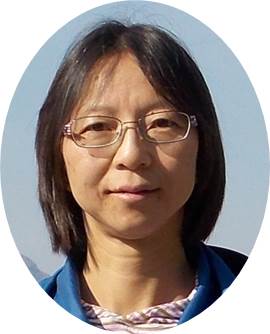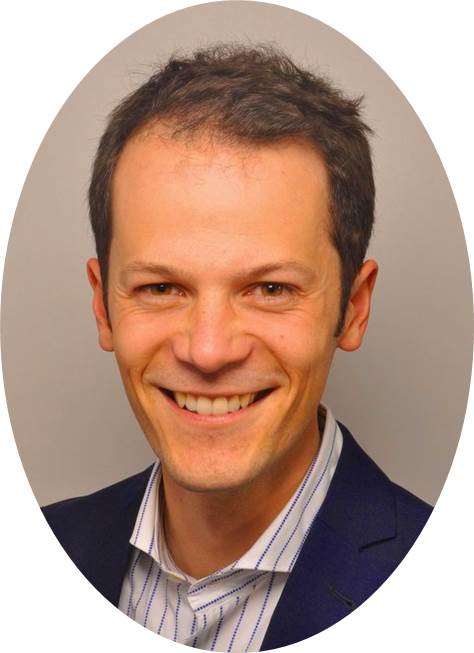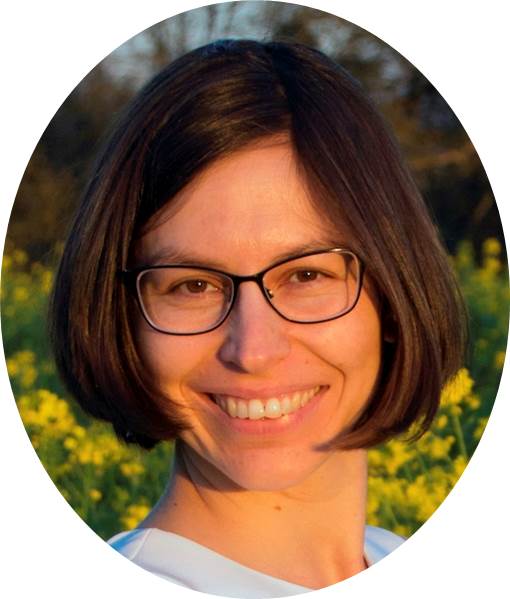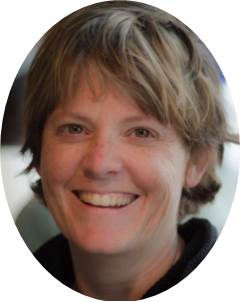
Plenary Speakers
|
Kok Leng Yeo Max Planck Institute for Solar System Research, Germany Solar irradiance variability and surface magnetism (Session 1) |  |
|
The variation in solar irradiance is commonly assumed to be driven by its surface magnetism. Until recently, this assumption could not be verified conclusively as models of solar irradiance variability based on solar surface magnetism have to be calibrated to solar irradiance measurements. Making use of realistic three-dimensional magnetohydrodynamic simulations of the solar atmosphere and state-of-the-art full-disk magnetograms from SDO, we developed a model of total solar irradiance (TSI) that does not require any such calibration. The modelled TSI variability is therefore, unlike preceding models, independent of TSI measurements. The model replicates over 95% of the observed variability over the lifetime of SDO, confirming the relationship to solar surface magnetism and leaving limited scope for alternative drivers of solar irradiance variability (at least over the time scales examined, that is, days to the solar cycle). BiographyKok Leng Yeo is a postdoc with the Sun Variability and Climate group at the Max Planck Institute for Solar System Research. His primary research interest is the relationship between solar surface magnetism and solar irradiance variability, in particular, the physical modelling of the latter through state-of-the-art MHD simulations and radiative transfer techniques. | |
|
Jiong Qiu, Montana State University, USA Signatures of Magnetic Flux Ropes: What Are They and What Do They Do Before Eruption? (Session 2) |  |
|
With its unprecedented capabilities, the Solar Dynamics Observatory has brought into our view a full range of dynamics in the Sun's atmosphere. For the first time, we have been able to monitor, continuously and in great details, evolution of the magnetic field and plasma properties prior to Coronal Mass Ejections, the most spectacular form of energy release in the heliosphere. Some CMEs, when finally reaching 1 AU and measured by satellites near Earth, are found to be magnetic flux ropes. We still do not know the exact origin of these structures. Are all CMEs flux ropes at their birth? How do they form on the Sun? What are the plasma signatures and magnetic properties of flux ropes in the corona prior to their eruption? What is the magnetic environment that leads to formation and eruption of a flux rope? How are CMEs and their magnetic configuration related to other energetic events, e.g. flares and energetic particles? This talk will review some significant progress in the SDO era to help answer these questions using observations as well as advanced MHD models. BiographyJiong Qiu is an associate professor of Physics at Montana State University. Her research focuses on understanding magnetic reconnection and subsequent energy release in solar eruptive events. She analyzes observational signatures of magnetic reconnection, diagnose plasma heating in solar flares, and study the evolution and structure of CMEs in the corona. She works with graduate and undergraduate students, and has managed the NSF-sponsored Research Experiences for Undergraduates program at MSU since 2008. Previously, she has also conducted earthshine measurements of global atmosphere properties at Big Bear Solar Observatory, New Jersey Institute of Technology. She earned her PhD in astrophysics from Nanjing University in China. | |
|
Vincent Böning Max Planck Institute for Solar System Research, Germany Solar interior flows: Recent results and current challenges (Session 3) |  |
|
Helioseismology has had great success in determining the solar interior rotation profile, its dependence on the solar cycle and its temporal variation. After reviewing these results, I will turn to two less understood phenomena in the solar interior, namely meridional circulation and the nature of convective flows in the deep interior. I will argue that both of these phenomena can be brought to a similar understanding. Helioseismic inversions for the deep solar meridional flow have not yet come to a consistent picture, for which there are several possible reasons. A number of systematic effects have been shown to be present in the data. Among those is a spurious center-to-limb effect. Although progress has been made to characterize this effect, its origin is not yet understood. Furthermore, it was shown that inferences of the meridional flow are ambiguous in the lower half of the convection zone for two years of data. In addition, several results suggest a time dependence of the deep meridional flow. An even larger discrepancy exists in measurements of the spectrum of convective velocities at depth. Here, I will present a new approach to reexamine one of the conflicting studies that is based on a more accurate model for the observations. Finally, I will close with a short review of a few interesting recent results, among which are the detection of equatorial Rossby waves and a study of wave-like properties of supergranulation. Both of these results imply that helioseismology agrees with surface observations such as correlation tracking. These are good news for tackling the challenges ahead. BiographyVincent Böning is a postdoctoral researcher at the Max Planck Institute for Solar System Research in Göttingen, Germany, and works on helioseismology of meridional circulation and subsurface convection. He received his Ph.D. in 2017 from University of Freiburg, Germany, with a project on deep meridional flow at the Kiepenheuer Institute for Solar Physics. As a main result of his thesis, he found that the detection of the meridional flow is ambiguous for flows below about 0.85 solar radii when a time series of about 2 years of GONG data is used. | |
|
Maria Kazachenko Space Sciences Laboratory, UC Berkley, USA Data-driven Models of the Solar Corona Magnetic Fields: Review (Session 4) |  |
|
The advent of high-cadence, large-scale photospheric vector magnetic field and Doppler velocity measurements from the Solar Dynamics Observatory and progress in the computational techniques facilitated development of the time-dependent data-driven models of the coronal magnetic fields. In this talk I will first review current state and challenges of these models. I will then describe recent progress of the Coronal Global Evolutionary Model (CGEM), a collaborative effort between UC Berkeley, Lockheed Martin and Stanford University that computes electric fields in the photosphere to drive a 3D non-potential model of the solar corona magnetic fields. BiographyMaria Kazachenko received her PhD in Physics at Montana State University under Richard Canfield, Jiong Qiu and Dana Longcope. Following graduation, she joined George Fisher's theory group at the University of California at Berkeley, first as a Postdoctoral Fellow, then as a Research Physicist. In August 2018 Maria moved to Boulder, CO to become an Assistant Professor at the University of Colorado Boulder and the National Solar Observatory. Maria Kazachenko's research interests range from the storage of magnetic energy in active region coronae, to the release of that energy in solar flares with an emphasis of comparison and integration of observations with simulations. Recently, Maria developed a method to create a RibbonDB database of flare-ribbon properties in more than 3000 flares, C1.0 class and higher, observed by the Solar Dynamics Observatory. Along with George Fisher and Brian Welsch, Maria has developed, tested, and applied techniques to derive photospheric electric fields from sequences of vector magnetograms. These electric fields have been used as boundary conditions for the Coronal Global Evolutionary Model, one of the most realistic data-driven models of the solar atmosphere. | |
|
Sarah Gibson High altitude Observatory, USA Beyond Flatland: A Star of Many Dimensions (Session 5) |  |
|
The more we have learned about the Sun, the more we can appreciate its essential complexity. Telescopes confirmed that it was not an unblemished sphere. Multi-wavelength observations revealed its structured atmosphere, and ever-higher resolution exposed its spectacular dynamics. Helioseismology penetrated its depths, and STEREO views gave us our first three-dimensional perspective. With Solar Orbiter we will finally leave our ecliptic bias behind and see the Sun from high latitudes. What will we see? And what could we see if future missions dwell at near-polar vantages, providing a synoptic view from above or below? The science enabled by such viewpoints is broad and deep, with potential both to finally fill known gaps in our understanding, and to reveal hitherto undiscovered aspects of the Sun and heliosphere. BiographySarah Gibson is a Senior Scientist in the High Altitude Observatory (HAO) at the National Center for Atmospheric Research, and Section Head of HAO’s Solar Frontiers Section. Dr. Gibson received her Bachelor’s Degree in Physics from Stanford University, and her Masters and Doctoral Degrees in Astrophysics from the University of Colorado. Her research centers on solar drivers of the terrestrial environment, from short-term space weather drivers such as coronal mass ejections (CMEs), to long-term solar cycle variation. She was the recipient of the American Astronomical Society – Solar Physics Division 2005 Karen Harvey Prize. She was a Scientific Editor for the Astrophysical Journal and has served on many national and international committees. She is currently a member of Executive Committee of the National Academies' Space Studies Board and co-chair of its Committee on Solar and Space Physics, and is Vice President of the IAU Division E (Sun and Heliosphere). She is also committed to education and public outreach. She gave the first of NCAR's 50th anniversary public lectures, participated in the NOVA episode "Secrets of the Sun" and NBC Learn's "When Nature Strikes: Space Weather" (NSF/TWC), and has written a blog post for the Huffington Post entitled "Living with Space Weather (Baby, It's Charged Outside)". | |
|
Dan Seaton University of Colorado and National Oceanic & Atmospheric Administration, USA Exploring the Middle Corona with a New Generation of Instruments (Session 6) |  |
|
The so-called “middle corona” — the region of the corona between 1.5 and a few solar radii — is the region where CMEs are accelerated, where magnetic energy is released by reconnection during solar flares, and where the nascent solar wind begins to be accelerated as it flows out into the heliosphere. Observations of this region therefore hold much potential to address key questions in solar physics, but because observing this region is technically challenging, it remains relatively poorly explored. SWAP on PROBA2 and SUVI on GOES-R, both of which can observe the EUV corona to heights larger than 2 solar radii, have produced observations demonstrating the value of observing this region, and a new generation of instruments currently in development will push the frontiers of understanding of this region considerably farther in the coming years. In this talk I will discuss some of the key questions in solar coronal physics that we can answer by exploring the middle corona and discuss some current and future opportunities to explore the middle corona using a variety of techniques and instruments. BiographyDan Seaton is a research associate at the University of Colorado’s Cooperative Institute for Research in Environmental Sciences and is the Senior Solar Physicist for NOAA’s National Centers for Environmental Information. He received his Ph.D. from the University of New Hampshire in 2008 and subsequently spent many years at the Royal Observatory of Belgium where he served as PI for the SWAP EUV imager on ESA’s PROBA2 spacecraft. His experience with SWAP and, more recently, the Solar Ultraviolet Imager on NOAA’s GOES-R, drove his interest in exploring the corona’s structure and activity on large scales, and he works on a variety of projects to do this using various techniques and instruments. | |
|
Vincent Barra Université Clermont-Ferrand, France Deep Learning and solar data processing - an introduction with applications (Session 7) |  |
|
Over the past few years, deep learning has become the state-of-the-art technique for many problems: classification, visual recognition, speech recognition, natural language processing or even playing games. The developement of new algorithms as well as the improvment of hardware and computing capacity make these methods able to address new application fields with big data and complex problems. In this talk, I will introduce the main topics that underlie the deep learning paradigm, and then detail four possible applications that solar data processing can benefit from: classification of images or events for segmentation or semantic recognition purposes ; inverse or ill-posed problem solving, particularly focusing on image super resolution ; and data generation using generative adversarial networks. BiographyVincent Barra received his PhD in Image Processing from the University of Clermont-Ferrand, France, in 2000. He has been the dean of an engineering school in Computer Science from 2012 to 2017. He is currently a Full Professor in Computer Science at the Clermont-Auvergne University. His research interests include image processing, machine and deep learning,and n-dimensional data analysis. He has published or co-published more than 50 peer-reviewed papers in the field of image and data analysis. | |
|
Allison Youngblood NASA Goddard, USA The Solar-Stellar-Exoplanet Connection (Session 8) |  |
|
Cooperation between solar and stellar astrophysicists opens new research avenues for both fields as well as planetary and exoplanetary science. Stellar astrophysics leverages detailed information about the Sun to add some resolution to a usually spatially-unresolved stellar picture, and observations of sun-like stars spanning the stellar lifetime inform the evolutionary history and future of the Sun. Since 2010, the Kepler/K2 satellite’s ultra-precise long-baseline photometry has greatly renewed interest in Sun-as-a-star observations via the discovery of thousands of exoplanets, superflares on Sun-like stars, unique starspot distributions, asteroseismic oscillations, and rotation periods for stars of a wide range of mass and age. Scientific resources worldwide are concentrated on finding and characterizing even more exoplanets, and as the necessary techniques and technologies are pushed to their current limits, information about stars is desperately desired with many researchers turning to solar physics for answers on topics like the origin of radial velocity jitter and the transit light source effect. Additionally, solar and planetary science provide information on phenomena that are important for exoplanet habitability and atmosphere evolution that either cannot currently be observed or are very challenging to observe from other stars. Examples include EUV radiation, CMEs, stellar winds, and multiwavelength flare energy partitions, which all could greatly impact atmospheric heating and chemistry, potentially resulting in catastrophic mass loss. In this overview, I will discuss some of the stellar and exoplanet communities’ needs from the solar community, and I will present some recent results that highlight how extreme the environments around stars other than Sun can be. BiographyAllison Youngblood is a NASA Postdoctoral Program Fellow at Goddard Space Flight Center. She received her PhD in Astrophysics in 2017 from the University of Colorado at Boulder with a focus on UV spectroscopy of M and K dwarf stars (<0.80 solar masses) known to host exoplanets. She works on characterizing the high energy photon and particle environments of exoplanets that will be targeted for detailed atmospheric characterization in the 2020s with the James Webb Space Telescope and ground-based Extremely Large Telescopes. When direct observations are unavailable or not possible (e.g., the EUV and energetic particles), she uses constraints from solar data. | |



